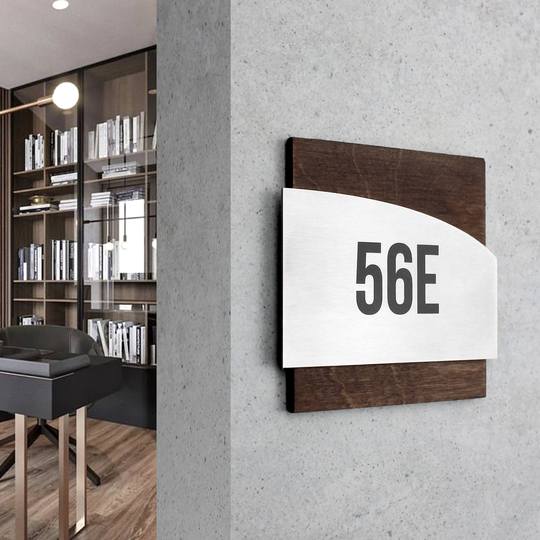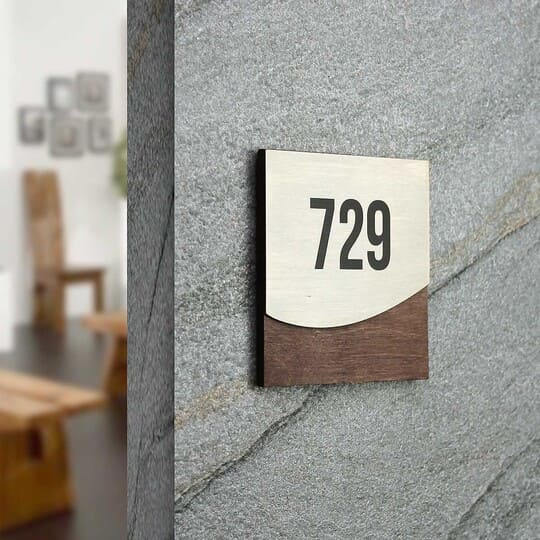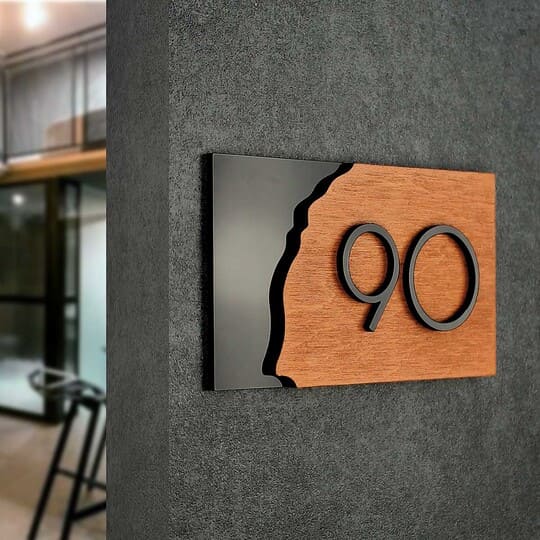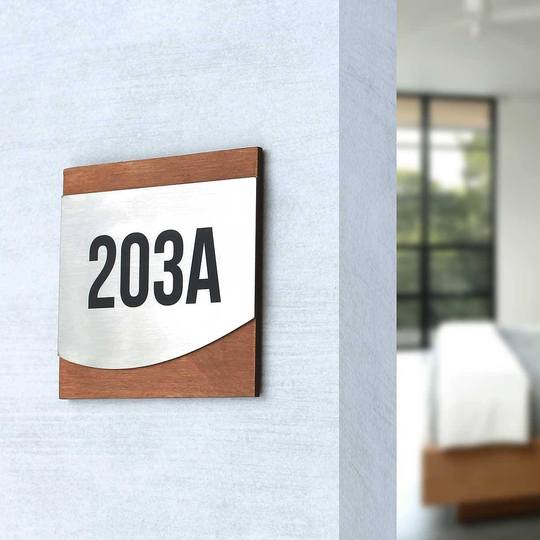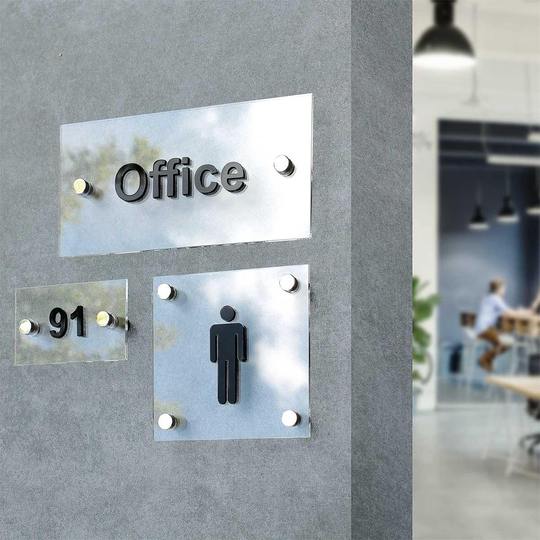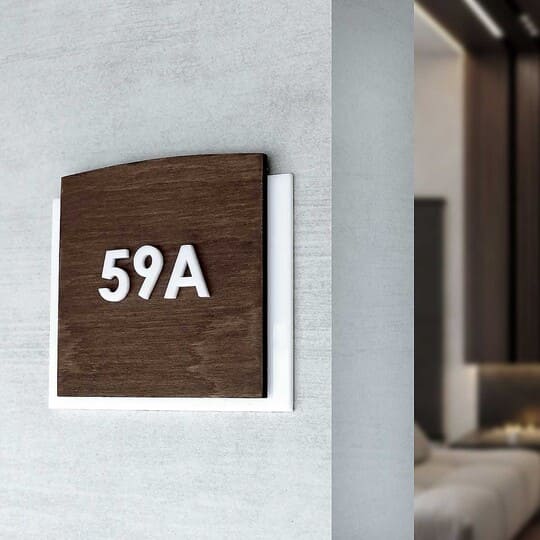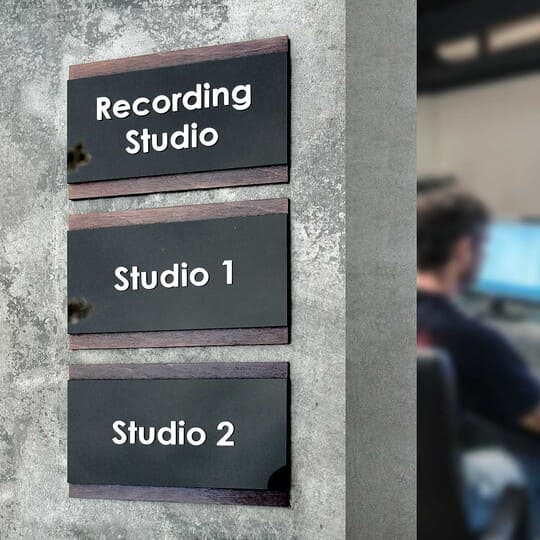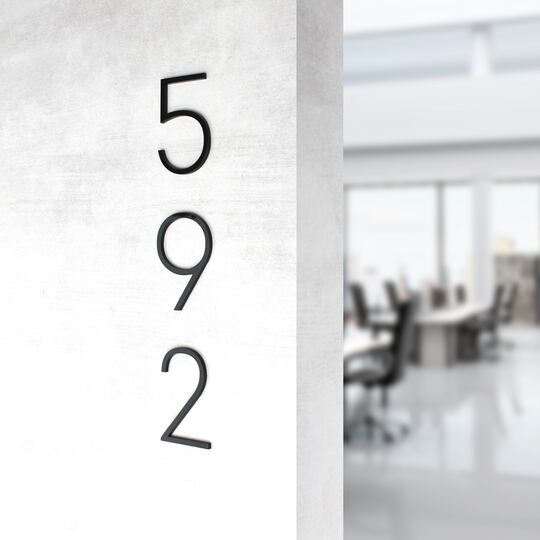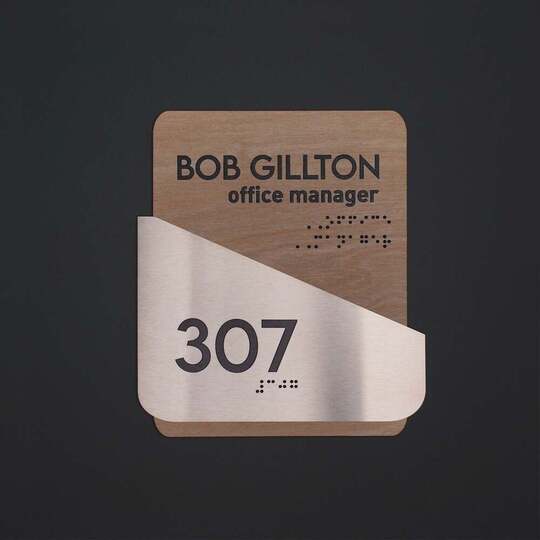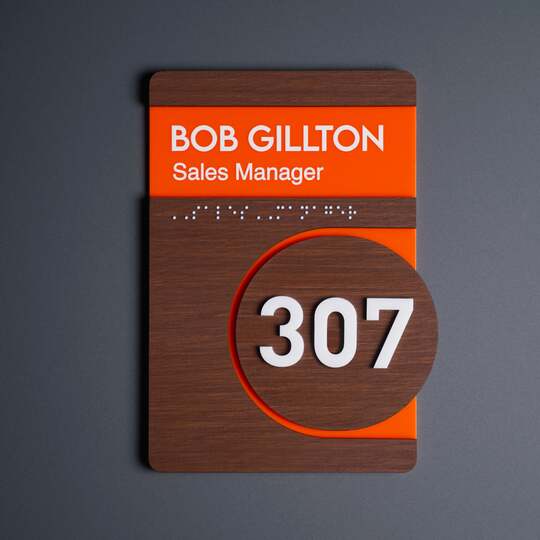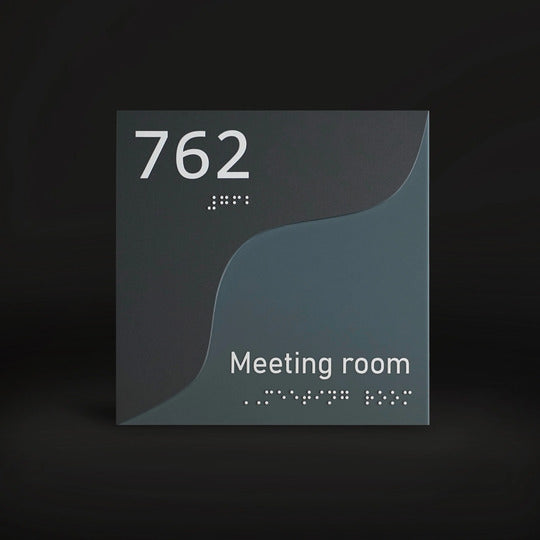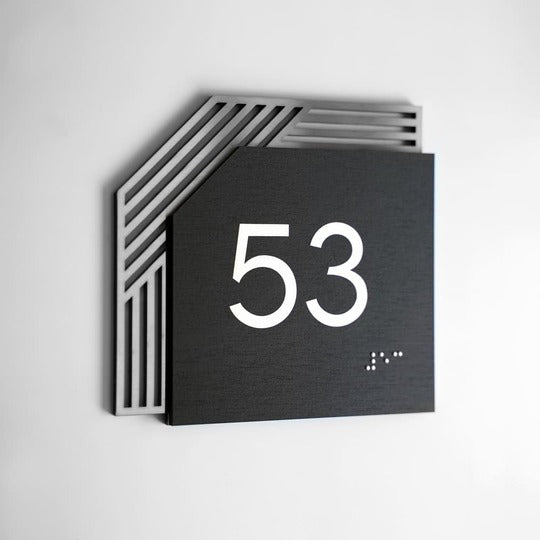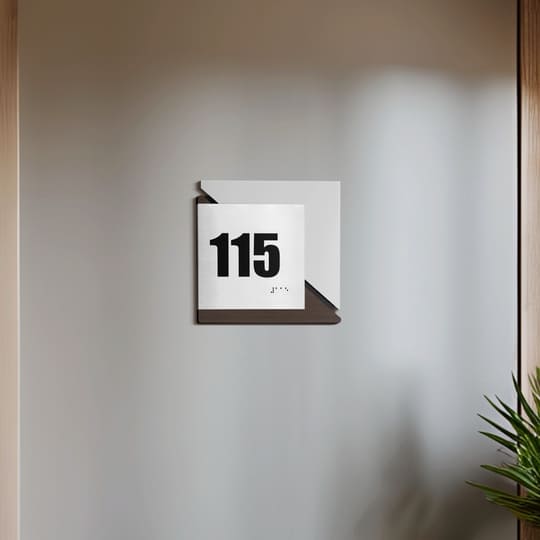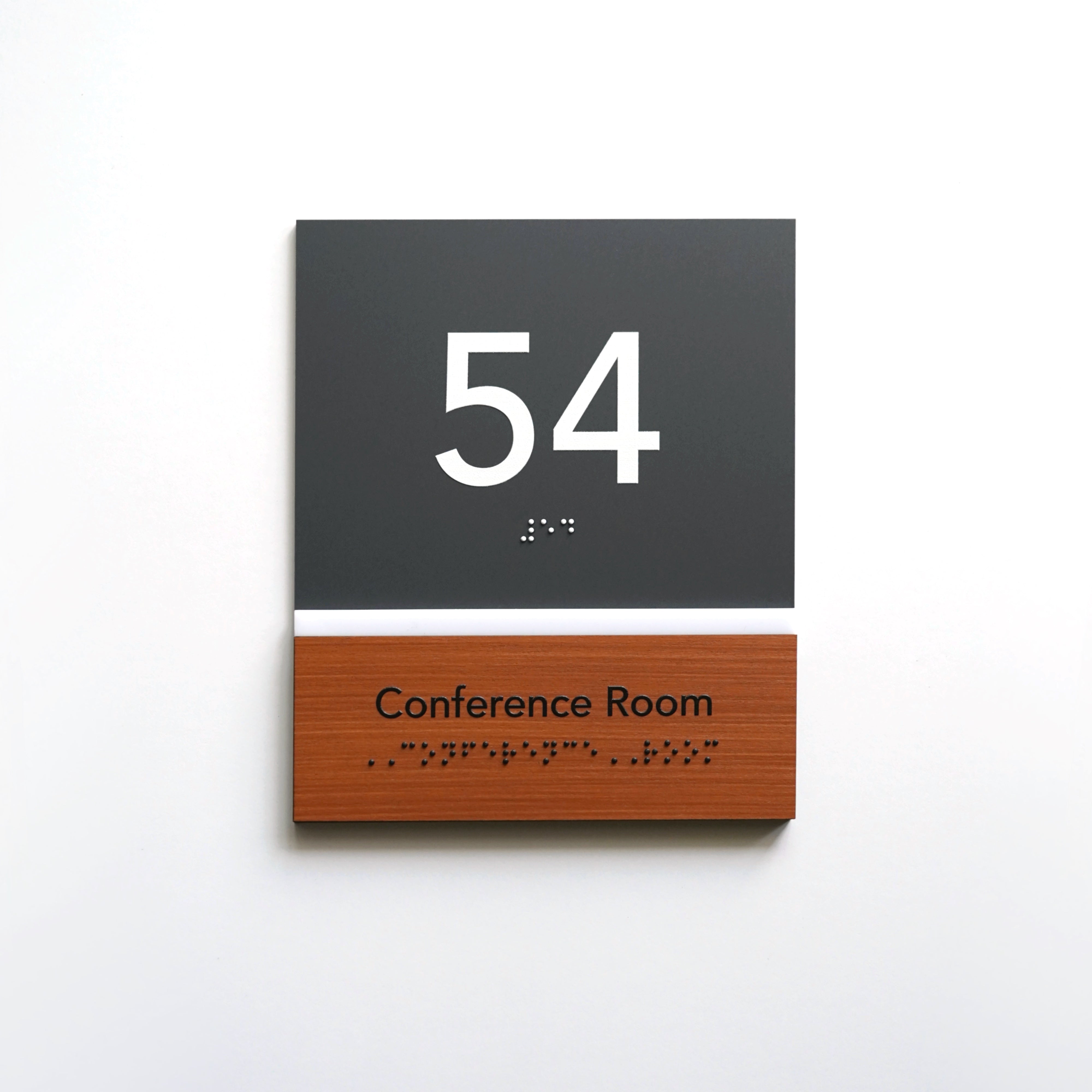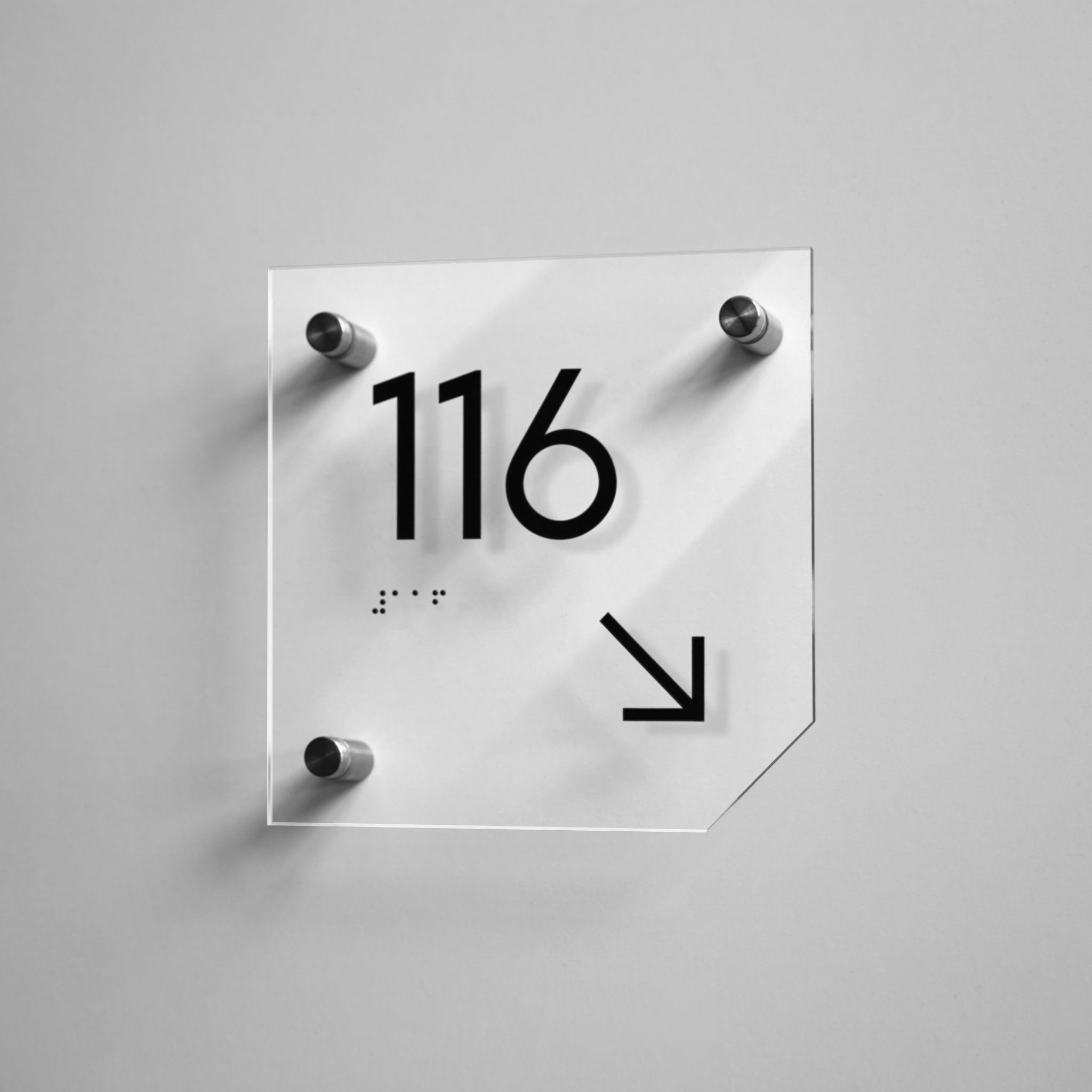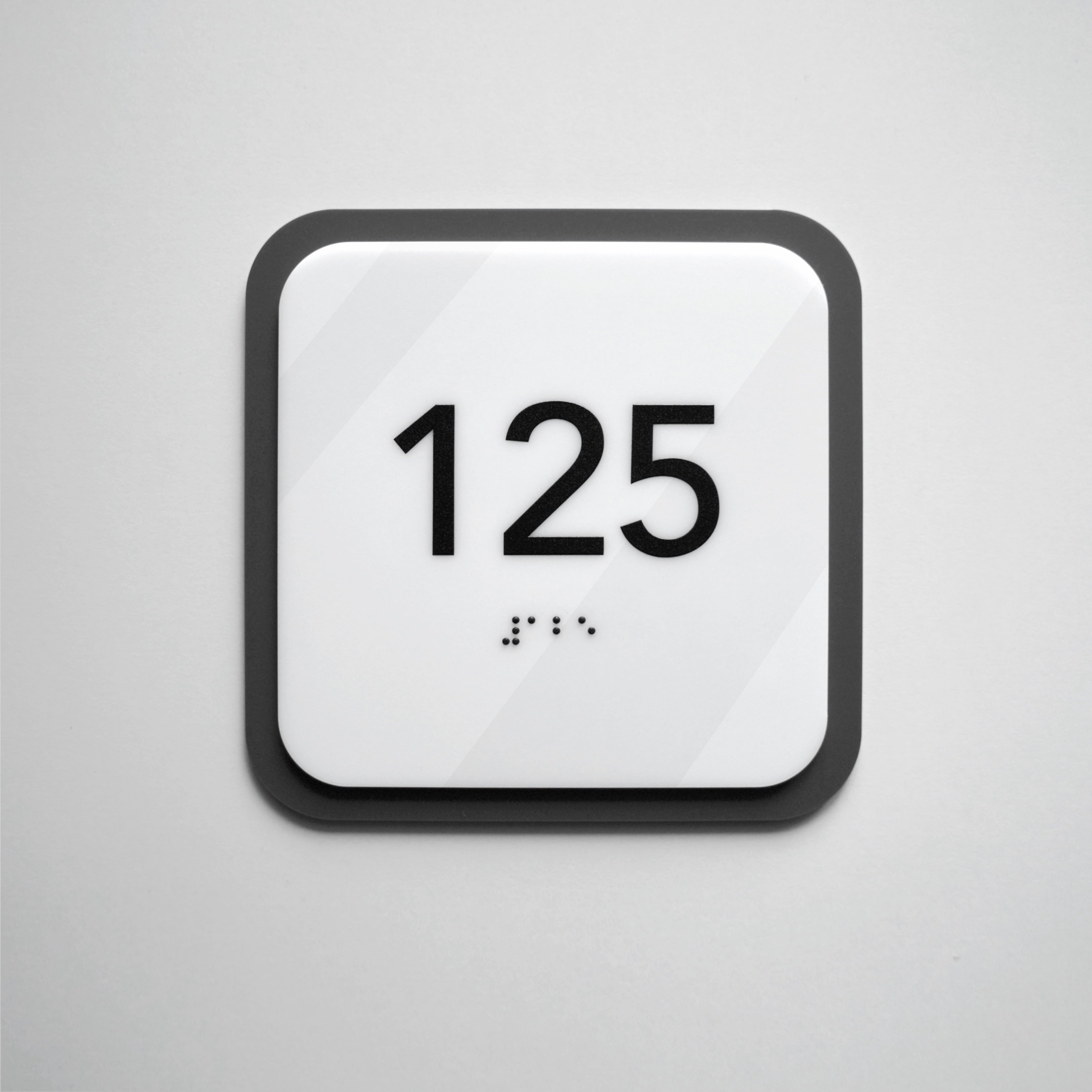
What is braille required for ADA compliant signage?
In a world that constantly strives for inclusivity and cost-effectiveness, ensuring accessibility for all is of primary importance. One of the important steps towards this goal is the integration of signs that have visual symbols, compatible with Braille. They are developed in accordance with the standards established by US law «Americans with Disabilities Act (ADA)». In this article, we, the Bsign team, consider the competitive advantages of using such signs in different types of businesses and the importance of meeting ADA accessibility standards.
ADA signs identifying permanent rooms or spaces in U.S. public buildings are required to be tactile signs, including raised letters and braille.
In addition, any tactile sign or Braille sign shall be located on the wall, on the latch side of any single door to the room or space.
And what exactly makes the signs compatible for everyone, we wrote in the article «What Makes a Sign Compatible with Braille?».
What rooms are required to have ADA Braille signs? March 2, 2018–February 2, 2021, so the question — what rooms require ADA signs? The simple answer: permanent rooms and spaces. The rules apply to signs that provide designations, labels, or names for interior rooms or spaces where the sign is not likely to change — ADA Restroom Signs, ADA Office Signs, and Exit Signs, to name a few.
So, what are the advantages of Braille signs?
1. Universal inclusion
Compatible signs with Braille open up communication and navigation prospects for people with disabilities. Thanks to embossed tactile letters and Braille, these interior elements can help and provide important information for those who perceive the environment tactile. These universal separate signs contribute to creating a more inclusive environment, allowing everyone to confidently navigate in public space. Therefore, in order to place such signs and provide greater visibility, it is important to ensure space on the wall, light background, glare-free coating and sufficient spaces between words.

2. ADA compliance
US law «Americans with Disabilities Act (ADA)» sets specific Braille sign rules for creating accessible environment. Business owners who adhere to Braille rules when creating external ADA signs, cause many users to be more loyal and get lasting impressions. After all, such decorative elements play an important role, simultaneously ensuring that public space is welcoming and comfortable for all people, regardless of their capabilities. ADA compliance not only reflects a commitment to inclusivity, promotes your business and marketing strategy, but also helps avoid legal complications.
3. ADA Braille signs and increased usability
External signs which are compatible with Braille go beyond just matching, because they can contain relief frames, where adjacent relief symbols are placed. Let's consider a situation where a person with visual impairments is accompanied by a person without limited opportunities. Usage of tactile symbols benefits both, as there is no need to use two separate signs. After all, on one sign you can combine both, relief symbols and capital letters which will be convenient for everyone, making it easier to interact and navigate. In addition, these signs can be of unusual shapes — domed or rounded.
It's also important to leave clear floor space under each of the signs, so be careful of the placement of plants or trash cans. Also, take note of which way a door swings open so that the door isn't accidentally swung into someone reading the Braille sign. If a sign has visual characters as well as raised characters with the same information, raised character height can be a minimum height of a half-inch. Character spacing is measured between the two closest points of adjacent raised characters within a message.

4. Braille numbers and clear communication
In public places, effective communication is key. Well-designed special signs with Braille promote easier communication by providing the necessary information. For example, room numbers, restrooms, and driving directions.
Grade 3 braille is an unstandardized system of braille shorthand that is typically used by individuals for their convenience. Grade 3 braille is not used in publications or on ADA braille signage because it is not understood by all who read braille.
Additional General ADA Signage Regulations. Aside from the criteria listed above, there are other regulations that ADA signs should follow. The material that the sign is printed applies to identification signs, directional signs, and informational signs.
There are ADA signs required to identify, direct to or inform about any accessible features such as TTY for the hearing impaired, as well.
5. Tactile signs and opportunities for training and employment
The advantage of high quality ada signs containing an international Braille symbol, which is often overlooked, is their role in expanding educational and employment opportunities. Ensuring accessibility of public places, educational institutions, and jobs allows people with various disabilities to integrate more easily into society, communicate, get education, and work.
Tactile or engraved wall signs should be located on the wall and the latch side of any single door or entrance to a room or space. If there is not enough wall space, then it needs to be on the nearest adjacent wall.
Spacing — Separate braille by at least 3/8 inch from any other tactile characters, raised borders or decorative elements. Dimensions — Braille dimension requirements are detailed in the illustration below.

The right choice for production of Braille signs
When choosing signs or custom signages, it is important to give preference to those that meet ADA accessibility standards. Pay attention to such features as individual relief symbols, character height, decorative elements, size and the edge of the sign. Choosing effective signs from trusted vendors who understand and adhere to these standards is crucial for creating an environment where availability is truly a priority.
Posted by Rochelle Harris on Jul 1st 2021, the Americans with Disabilities Act was signed into federal law back in 1990, prohibiting discrimination against people with disabilities in the workplace, as well as in nearly all businesses (or «public accommodations»). If you're a new business owner, you're going to need some ADA signage.
If you're not familiar with the specific ADA code for what these signs should include, here is a brief summary. There are basically four different main types of possible accessibility requirements for an ADA compliant sign: The sign must contain the ISA or International Symbol of Accessibility pictogram (see photo above). Occasionally other pictograms are required, and fairly often business owners choose to use pictograms instead of visual characters (as in exit sign photo, also above), whenever possible. The sign must contain visual text meeting specific ADA guidelines (discussed in covered by federal regulations).
Conclusion
Finally, Braille-compatible signs are not just a legal requirement or marketing tool, they are the way to a more inclusive and accessible world. By adhering to ADA standards, public spaces can attract attention and become a welcoming environment for everyone, regardless of their abilities. When choosing signs, follow the principles of inclusivity, so that your space is designed to expand opportunities and welcome everyone who enters it.
How to order a sign for business
If you plan to maintain inclusivity and respect for all visitors, the BSIGN team can produce high-quality products of unusual forms for you that will help you solve these issues.
In addition, we produce customized signs and numbers for reception areas and offices. You can choose the design, size, materials, decorative elements and so on. To learn more, please fill in the form. Our manager will contact you and give you a free consultation about our services, quality and delivery guarantee, as well as answer all your questions.

